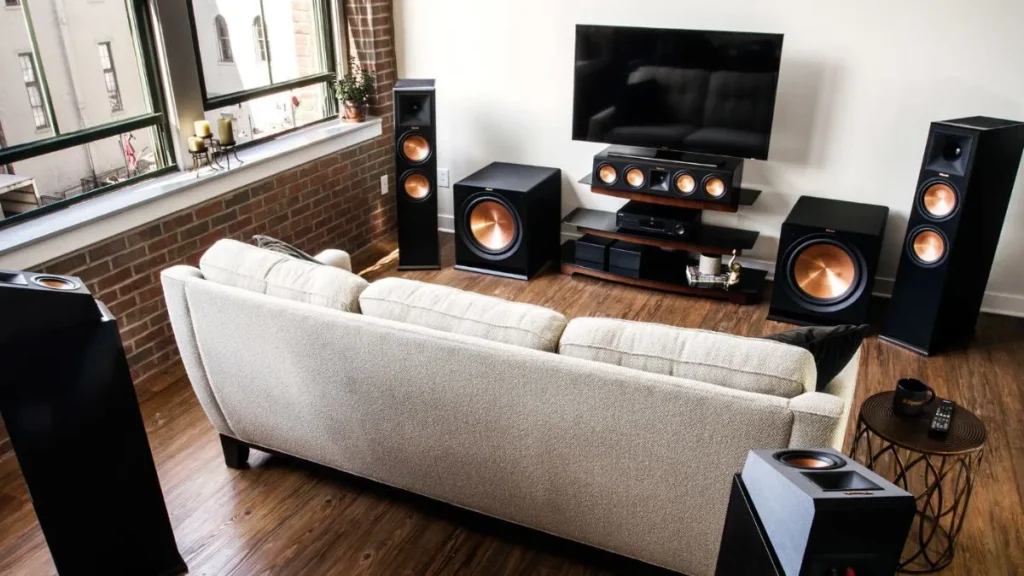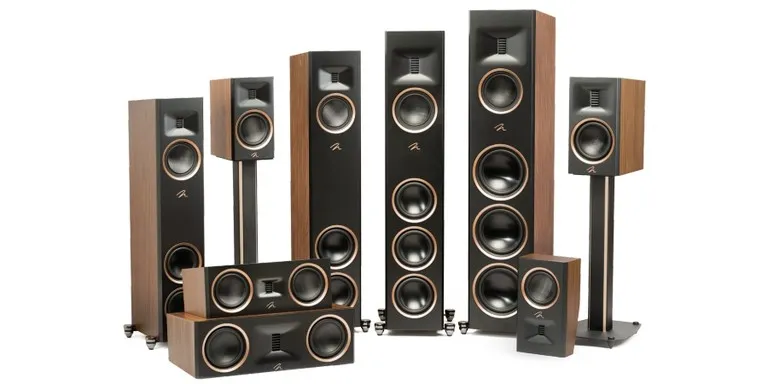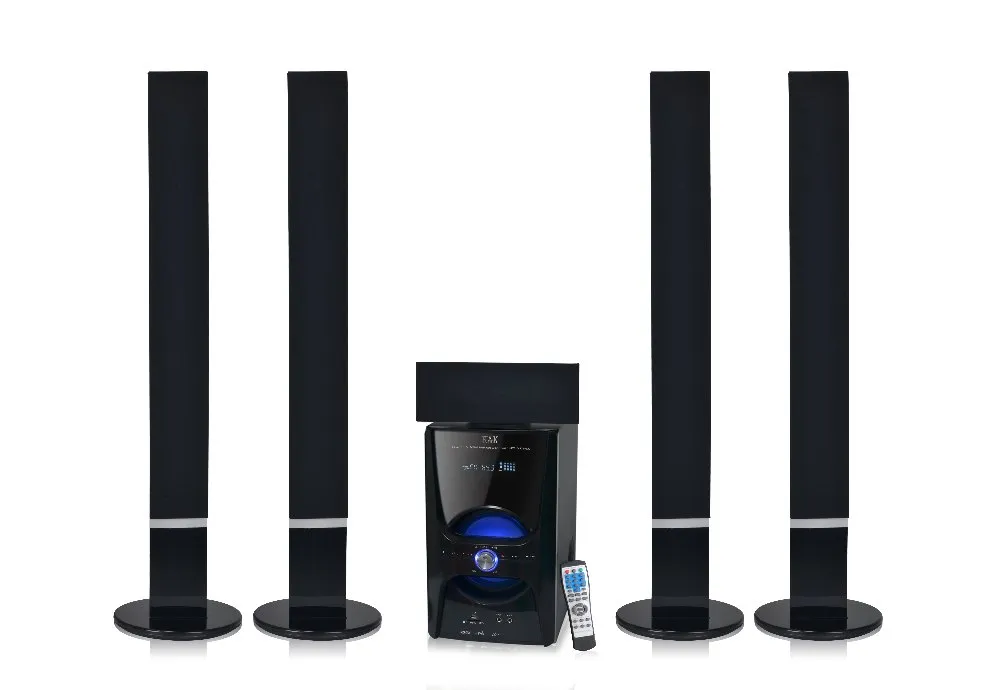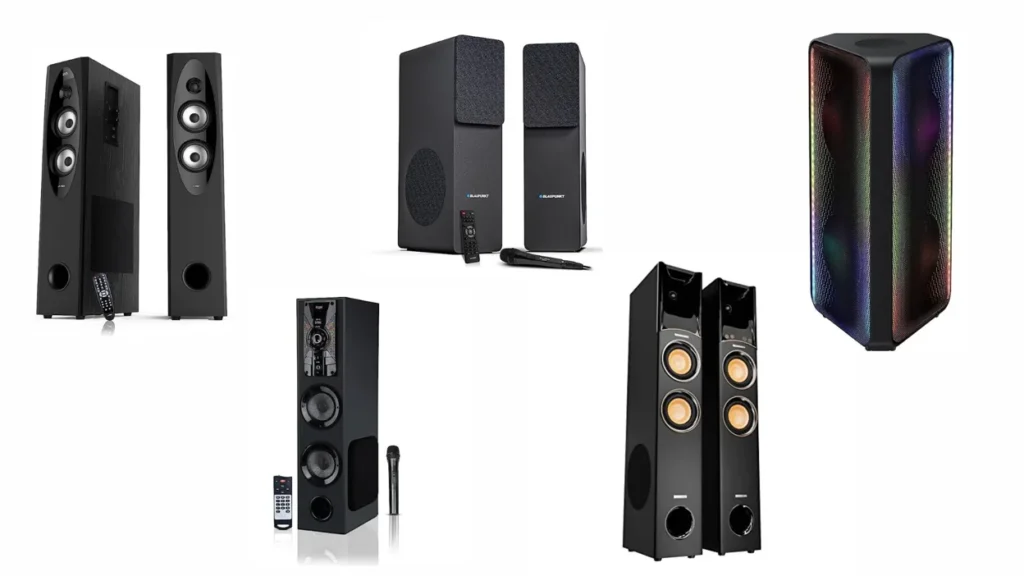Embarking on a quest to transform your auditory experience within the confines of your living space? Let’s talk about tower speakers – those tall speakers that stand on the floor and promise a better listening experience. In this article, we’ll explore Tower Speakers what makes them a great choice, why you might want them, and how to pick the right ones for you.
What are Tower Speakers?
Towerspeakers, also known as floor-standing speakers, are tall and freestanding audio speakers designed to be placed on the floor. Their key advantage is producing a broader range of sounds and more powerful audio, thanks to larger drivers that can generate more bass.
Nothing quite compares to the effect of a top-notch tower speaker system when losing oneself in music, movies, or games. Tower speakers are recognised for their prowess in producing a deep, resonant sound that fills the whole space. This blog will examine some of the Best Tower Speakers now on the market, each having unique qualities and characteristics.
Superior Sound Quality
Every excellent tower speaker’s ability to correctly and faithfully reproduce sound lies at its core. Elista collaborates with sophisticated drivers and tweeters to deliver a balanced frequency response. To fully appreciate the nuances of your favourite audio content, look for speakers with a wide frequency range and little distortion.
Elegant Design and Visual Appeal
Tower speakers are elegant complements to your living area and are aural powerhouses. Many producers have concentrated on combining superb audio quality with sophisticated design. For speakers that will blend in with your home’s structure, look for those with slick lines, luxurious finishes, and configurable features.
Adaptive Power Management
Tower speaker selection must take power handling into account. Speakers with higher power ratings can easily handle demanding audio streams. Choose models with powerful amplifiers and great sensitivity to experience more dramatic and impactful music, even at lower volumes.
Connectivity Options
In today’s world, the connection is crucial to our audio sets. Tower speakers offer flexibility and convenience with various connection choices, such as Bluetooth, Wi-Fi, or auxiliary inputs. You can stream music easily thanks to wireless connectivity’s easy integration with smartphones, tablets, and other devices.
Multiple Channel Support
Tower speakers that allow multi-channel configurations are a need for anyone looking for a fully immersive music experience. For a better cinematic experience, these speakers may be fitted into home theatre systems. They produce accurate and encompassing sounds. For the most immersive surround sound experience, look for Dolby Atmos or DTS:X compatibility.
Customisation and Calibration
Tower speakers with more sophisticated customisation and calibration features let you adjust the audio output to your tastes and the room’s acoustics. Features like built-in equalisers, room correction technology, and adjustable bass and treble levels guarantee the best possible sound reproduction in the listening setting.
Why Choose Tower Speakers?
If you’re looking for a great sound experience, tower speakers are a fantastic option. Here’s why:
Improved Sound Quality
Tower speakers are designed to produce a wider range of sounds and stronger audio than smaller speakers. This means you can feel more immersed in your music or movies and catch more details in the sound.
More Placement Options
Since tower speakers are freestanding, you can put them in different places. This is handy if your space is limited, or if you want to create a specific listening experience. For a surround sound effect, you might place them close to walls or in a corner.
Stylish Appearance
Tower speakers can also make your room look good. There are many types and finishes to choose from, so you can find ones that match your room’s style.
Stereo Image and The Sweet Spot
A quality pair of floor-standing speakers can create the impression of sound coming from places where there are no speakers. “Is that really only two speakers playing?” our clients frequently ask, after a two-channel demo in our state-of-the-art showrooms. Our displays are geared towards creating an immersive experience at the seating location.
Listeners who are in that sweet spot hear vocals that seem to be centered between the two speakers, effects that are further left or right than the speakers, and an overall impression of where instruments were placed when the recording was made. This impression is known as a “stereo image.”
Even within a home theater system, a proper tower setup is important for music listening, transporting you a great seat at a legendary concert, or to the booth where your favorite album was recorded. Older television or movie content also tends to rely on purely stereo audio. Finally, newer movies ask tower speakers to reproduce the film score.
The main left and right speakers are clearly the foundation of any system, so let’s explore how to get an ideal placement.
Speaker Position Relative To Each Other
Your front left and right speakers should create an equilateral triangle with the primary seating location, where the distance between the left and right is roughly the same as the distance to the listener. For example, if you’re sitting eight feet back from the speakers, the towers should be eight feet apart from one another.
Sitting further away would require a larger space between the speakers. Fortunately a longer distance to the seating area usually goes hand-in-hand with a larger room that can provide space to spread out the main speakers. Speakers are usually toed in – slightly angled towards the listening position (and one another) – but in a large room, you may want to reduce toe in to cover a wider seating area. Yes, the sweetest spot will become less sweet, but family movie night will improve for everyone else.
In a multi-purpose space where you need the speakers closer together, consider a chair for listening, like the Palliser Q series. You can always put the chair away when you’re not doing any critical listening!
Speaker Positioning Within The Room
The last component in any system is the room. Sound reflects off of walls, windows, and floors, and you hear the sound twice: directly from the speaker, and the first reflection from your room. Tower speakers are not immune to a challenging room, but they do offer more flexibility in placement than other types of speakers.
Your speaker’s ideal distance from the wall depends on whether and where it is ported, and the bass output you are aiming for. The port is a hole, usually round, that allows the speaker to move more air to create lower frequencies. Some speakers include an optional foam plug to reduce bass output from the port.
Tower Speakers Under 2000
Rear-ported speakers, like the Dynaudio Emit 50, will be able to create more bass if they are further from the wall. Two feet is ideal for many speakers, but if that isn’t practical, get as far away from the wall as your room (or aesthetic preferences!) will allow. Placing a rear-ported speaker closer to a rear wall would reduce the amount of bass you hear.
If your speaker is front-ported, such as the Focal Chora 826, placement closer to the wall will cause the speaker to project more bass into the room. Bottom-ported speakers are also less likely to lose low-end output when positioned closer to a rear wall. Either is an excellent choice in a room where speakers need to be backed up against a wall.
Avoid placing your tower speakers too close to a wall on either side. Your speakers will project sound in all directions, and you want to avoid an immediate first reflection from a wall. If possible, the left speaker should be about the same distance from your left wall as the right speaker is from the right wall. And, of course, avoid putting anything taller than a coffee table between the speakers and your listening position.
How can you position your floor-standing speakers for the best sound possible?
Start with granting the speakers an appropriate amount of distance from the wall behind them. Imagine a plane that will be created by the two tower speakers. Measure the shortest distance from that imaginary plane to your preferred seating location. This length is the ideal distance between your speakers, and you can now create your equilateral triangle.
Next, toe your speakers in towards the seating position. Manufacturer guidelines on toe in vary, though most recommend angling the speaker towards the listener. GoldenEar suggests pointing their towers directly at the listener; most brands will suggest having a less aggressive toe, where the left speaker points past the listener’s left ear, and the right speaker points past the listener’s right ear.
Now you’re ready to for a test drive! Put on a song that you love and fire up the system. Leave one speaker in place as an anchor – like a control in a science experiment – while you move the other speaker. This will help you fine-tune things like distance from the wall, distance from the other tower speaker, and toe in.
Read Also: best earbuds under 1000
Conclusion
There are many factors to consider when it comes to positioning tower speakers. Your main left and right are the workhorse of your system, playing during all types of content and achieving a stereo image. The mental picture that immerses you in the movie or music. The primary seating location will guide how far apart your towers should be for one another and how much you should toe them in. Where the speaker is ported can impact the best placement in your room, and could be the deciding factor. When you’re building your system. When it’s all said and done, don’t forget to have fun with it! Once you’ve used these general guidelines, test it out with material you know, and experiment to your heart’s content.








